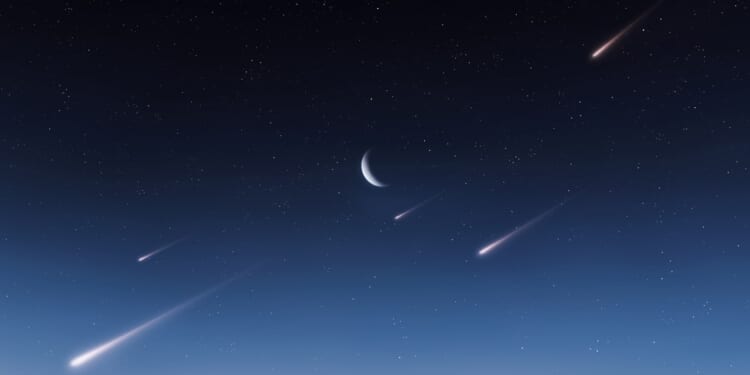The scientific community is overreacting to theoretical computer models—and offering unaffordable and impractical solutions to the hypothetical problems they have thus far identified.
Elon Musk has made SpaceX into an incredible brand—and the most iconic private space firm in existence. Between his reusable rockets, which have democratized access to space by reducing the cost of launches, which has both revolutionized global telecommunications by delivering internet to parts of the world where no internet infrastructure exists and has created a new strategic capability, SpaceX is at the bleeding edge of space innovation. It is without a doubt a great company, as well as a critical defense contractor for America’s national security.
Yet, it has not all been an easy ride. And as one democratizes space—making it available to more people, corporations, and governments—the chances for something to go catastrophically wrong increases.
What’s more, the more that SpaceX serves as a critical defense contractor, the greater the chance that accidents will occur or that even SpaceX systems will become targets in the next major war (which both China and Russia are developing ways to disable Starlink satellites in orbit).
Understanding the Importance of Starlink
SpaceX’s Starlink program controls around 6,000 small, relatively cheap, and easy to replace satellites, in orbit. The vital thing about these systems—which makes them both affordable and useful for military purposes—is their replaceability. This is how the United States will stay ahead of its rivals who are racing to catch up to America in strategic high ground. Starlink and its military counterpoint, Starshield, ensures that the United States’ vulnerable satellites remain operating in a combat scenario.
But cheap, replaceable, and easily discarded satellites have a relatively short lifespan. Even if they aren’t damaged by natural phenomena or destroyed in war, they become obsolete. When they reach obsolescence, they are discarded and replaced. But those old sats aren’t retrieved by SpaceX and returned to the Earth below for disposal. They are left in decaying orbits, where they eventually return to the Earth—largely burning up in the atmosphere in a fiery display.
Environmental Concerns from Destroyed Starlink Satellites
A recent Times of India article reports that “Experts are increasingly alarmed about the potential effects of satellite reentries on Earth’s upper atmosphere. When satellites burn up, they release fine particles of metals such as aluminum oxide, which could interfere with the ozone chemistry and reflect sunlight.”
These experts are demanding increased legislation and regulations to prevent what they believe is an environmental catastrophe waiting to happen. A recent analysis in the academic journal, Science, dives deeper into the matter.
Here’s what they reported: “[A group of aerospace engineers at the University of Southern California] estimate[d] that a typical 250-kilogram satellite would generate 30 kilograms of aluminum oxide nanoparticles. Given the 2,000 deorbits that occurred in 2022, that amounts to 17 tons—a 30% rise above the amount from natural sources. In an era of megaconstellations, that could lead to 360 tons entering the atmosphere per year.”
The scientists featured in that Science article are concerned about the volume of the nanoparticles in the stratosphere and how they’ll interact with the ozone layer. Yet there remain many questions. For instance, the studies are based on computer modeling, rather than empirical observation. And the USC scientists did not model how much ozone would potentially be destroyed if 360 tons of aluminum oxide entered the atmosphere every year. So, while certainly concerning, much of what has been provided as evidence is fairly circumstantial—and based on models that are incomplete.
The scientific community is understandably concerned about environmental sustainability. Yet its attempt at a solution is opposite the entire point of Starlink: to create systems in orbit that can essentially maintain satellites and extend their lifespans so that they do not have to be so readily discarded. And there are NASA programs and private companies that are investigating the creation of things like on-orbit repair drones and what amounts to orbital workstations to keep satellites functioning.
All of that, however, is very long-term. Nothing is anywhere near ready for the real world. In any case, the purpose of Starlink is to provide cheap, redundant, and easily replaceable satellite capabilities. They are disposable by their nature.
So, in typical fashion, the scientific community is overreacting to theoretical computer models—and offering unaffordable and impractical solutions to the hypothetical problems they have thus far identified.
Starlink De-Orbiting Is Better than the Alternative
The scientists do not want old satellites to crash into the upper atmosphere, citing environmental concerns. What few of these scientists seem to understand, though, is that the alternatives they are offering to deorbiting old satellites in the upper atmosphere would be far more dangerous to the orbital planes around the Earth, as well as being more expensive.
The reason these satellites are deorbited and burn up in the atmosphere is because they cannot remain in space. If they do, they become hazards to other, functioning satellites. They crowd the orbits. Space may be infinite, but the orbits around the Earth are not. And they are already increasingly crowded. Therefore, the old sats cannot remain up there forever.
Destroying those satellites poses even more dangerous risks both to other satellite constellations as well as any humans operating in the orbits around the Earth, such as those on the International Space Station (ISS) or China’s modular space station. Generating the kind of debris, no matter how small, in orbit from destroying satellites would lead to the extremely destructive Kessler Syndrome—best seen in the opening act of the 2013 Sandra Bullock and George Clooney film Gravity.
Of course, the scientific community should continue to study the effects that increased deorbits of discarded satellites are having on the stratosphere. But until their data actually shows a real threat to the environment, they should stay out of the way of the private space sector. After all, SpaceX is the only thing right now keeping America ahead of its rivals in the new space race.
About the Author: Brandon J. Weichert
Brandon J. Weichert is a senior national security editor at The National Interest. Recently, Weichert became the host of The National Security Hour on America Outloud News and iHeartRadio, where he discusses national security policy every Wednesday at 8pm Eastern. He is also a contributor at Popular Mechanics and has consulted regularly with various government institutions and private organizations on geopolitical issues. Weichert’s writings have appeared in multiple publications, including The Washington Times, National Review, The American Spectator, MSN, The Asia Times, and others. His books include Winning Space: How America Remains a Superpower, Biohacked: China’s Race to Control Life, and The Shadow War: Iran’s Quest for Supremacy. His newest book, A Disaster of Our Own Making: How the West Lost Ukraine is available for purchase wherever books are sold. He can be followed via Twitter @WeTheBrandon.
Image: Shutterstock / Nazarii_Neshcherenskyi.
















